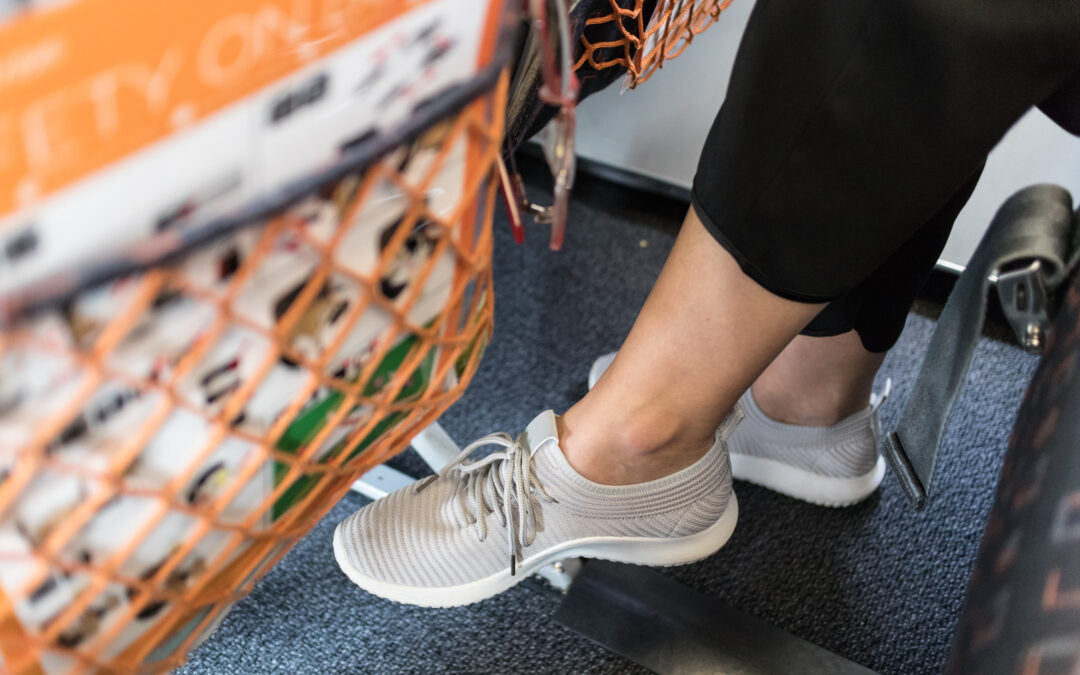Did you know that if you have recently had a vein ablation for treatment of varicose veins or venous insufficiency, then you are at a slightly increased risk of DVT when travelling on long flights?
Here in the Bay Area, we see many patients who travel very frequently for work or pleasure, often to places that require very long plane rides. Patients frequently ask if they can travel after ablation. About 2-3 weeks of waiting after a vein ablation is reasonable, but this can be tricky with many people’s schedules.
With this in mind, if you are considering air travel soon after your vein ablation procedure, here are a few considerations to keep in mind:
You must have a follow up ultrasound
All patients having RFA must have a follow up ultrasound in the office within one week. Ablation can cause clots to form near the groin. This occurs in about 1% of patients, and it is so common that we have a name for it: Endovenous Heat Induced Thrombosis (EHIT, for short). EHIT is graded according to how close the thrombus is to the deep vein, or if it is in the deep vein. The ultrasound only takes a few minutes to perform, and it gives an idea if there is any risk or existence of DVT. This ultrasound is essential and should never be skipped.
Use of Oral anticoagulation
If there is a clot near the deep veins on the follow up ultrasound, and especially if air travel is planned, blood thinners may be prescribed for a week or more. This ensures that the blood clot does not get larger. Often a week or two of anticoagulation is all that is needed in this case. These medications are very safe and work very well in preventing blood clots from becoming dangerous.
Other tips
Regardless of whether or not there has been recent vein ablation, there are certain things we recommend to reduce the risk of DVT with air travel.
- Compression stockings: These stockings help prevent swelling in the legs during air travel, and help the legs feel more rejuvenated at the end of a flight. They force blood into the deep veins to increase flow in these veins.
- Regular walking: Even if it’s somewhat annoying to your neighbors, it’s important to get up frequently during long flights to walk and move blood through your legs and your whole body! Just walk up and down the aisles several times before sitting down again. It also helps to pump your feet up and down (like repeatedly pushing on a gas pedal) while you are sitting in your seat. The muscular “calf pump” will help move stagnant blood in the legs.
- Hydration: drink plenty of water throughout your trip. Dehydration is a risk factor for Deep vein thrombosis. A bonus of drinking tons of water is that you will constantly need to get up to go to the bathroom on the airplane which will keep you walking.
So even though it is not ideal to fly very soon after a vein ablation procedure, patients can decrease the risk of DVT tremendously if they stay hydrated, walk frequently, and use compression stockings. They must have a post-op ultrasound before leaving. And finally, if there is a reasonable risk of DVT based on the post op ultrasound, oral anticoagulant therapy should be given.
Please let us know your travel plans at the time of surgery! We will work with you to make sure that you are safe and problem free if you have to travel after vein procedures!
Vein ablation is a medical procedure commonly used to treat varicose veins. Different types of ablations include laser (EVLT), radiofrequency (RFA), and glue or cyanoacrylate (VenaSeal). Essentially, these techniques close poorly functioning superficial veins, redirecting blood flow to deep veins.

